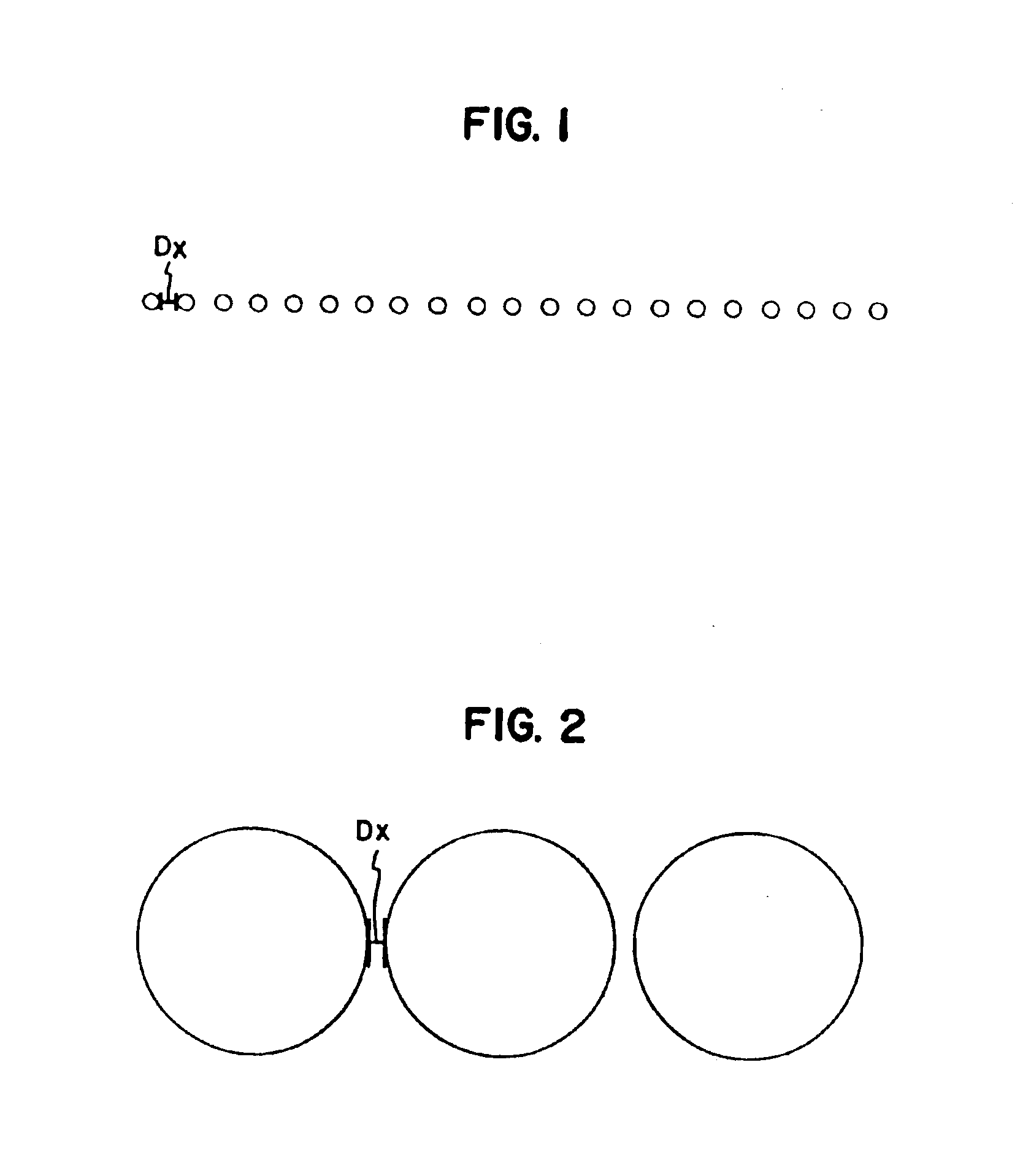Filter material construction and method
a filter and material technology, applied in the field of filters, can solve the problems of failure of the system, blinding or occluded parts, and simple filter design such as the one described above, and achieve the effect of improving efficiency, filter life or
- Summary
- Abstract
- Description
- Claims
- Application Information
AI Technical Summary
Benefits of technology
Problems solved by technology
Method used
Image
Examples
experiment 1
Tobacco Smoke Loading
This experiment evaluates use of a high efficiency media using a relatively open pore and fiber structure according to the present invention, to improve loading (life) relative to a filter media made of the same fine fibers and of approximately the same initial efficiency but of a smaller interfiber spacing. Tobacco smoke was used for several reasons. First, it tends to plug conventional high efficiency filters, with small pores, quickly. The tar in the smoke is an amorphous solid that flows and is subjected to large capillary forces from the small fibers. The capillary forces cause the tobacco smoke residue to coat the fibers and wick into the pores. Second, it is a common contaminant encountered in vehicle cabin air, indoor air, etc.
Materials Tested:
(a) A single layer of Ultra-Web® type fine fiber material comprising high efficiency fine polymeric submicron fibers on a substrate of Hovolin 7311. Hovolin 7311 is a former Hollingsworth & Vose substrate comprisin...
experiment 2
DOP Efficiency and Loading
These tests were conducted to evaluate a high efficiency media using a relatively open pore fiber structure to improve loading (life) relative to a filter media made of the same fine fibers and of approximately the same initial efficiency but of a smaller interfiber spacing. Alternatively stated, the study was to evaluate whether filter life improvements can be made by reducing the single layer (component) efficiency while maintaining equal composite efficiency. DOP is an oil, not an amorphous solid like the tar contained in cigarette smoke, and acts much like the tar in Experiment 1 with regard to closing pores, wicking, and coating fine fibers. However, the test apparatus used for this experiment measured real time efficiency and pressure drop.
Set Up:
Ref: MIL STD 282, ASTM D 2986
Materials Tested:(a) A single layer of high efficiency fine polymeric submicron fibers on a substrate of H&V 7311, with a combined LEFS efficiency of 99%.(b) An 8-layer composite ...
experiment 3
NaCl Loading
This series of tests was performed to evaluate filter life benefits that can be obtained by going from a single high efficiency layer of fine fiber media supported by a substrate to multiple low efficiency layers of fine fiber on a substrate, with approximately equal composite LEFS efficiencies. These tests are distinguished from the tobacco and DOP loading in that the salt particles fed to the media are discrete solid particles, not liquid or semi-amorphous solids, therefore caking occurs and efficiency increases with loading. It was observed that after caking occurs, the slopes of the loading curves were very similar for all of the media tested. In particular, after caking occurs, the media is no longer being tested / challenged.
One measure of filter life is time to a predetermined pressure drop; another is mass of contaminant fed to a predetermined pressure drop. If the predetermined terminal pressure drop is significantly above the restriction where cake formation begi...
PUM
| Property | Measurement | Unit |
|---|---|---|
| diameter | aaaaa | aaaaa |
| diameters | aaaaa | aaaaa |
| thickness | aaaaa | aaaaa |
Abstract
Description
Claims
Application Information
 Login to View More
Login to View More - R&D
- Intellectual Property
- Life Sciences
- Materials
- Tech Scout
- Unparalleled Data Quality
- Higher Quality Content
- 60% Fewer Hallucinations
Browse by: Latest US Patents, China's latest patents, Technical Efficacy Thesaurus, Application Domain, Technology Topic, Popular Technical Reports.
© 2025 PatSnap. All rights reserved.Legal|Privacy policy|Modern Slavery Act Transparency Statement|Sitemap|About US| Contact US: help@patsnap.com



